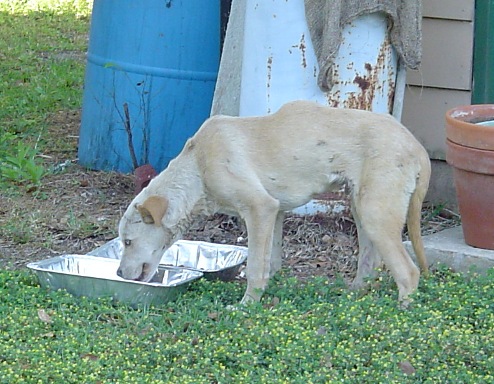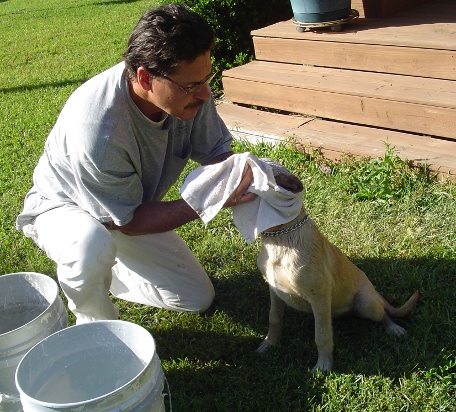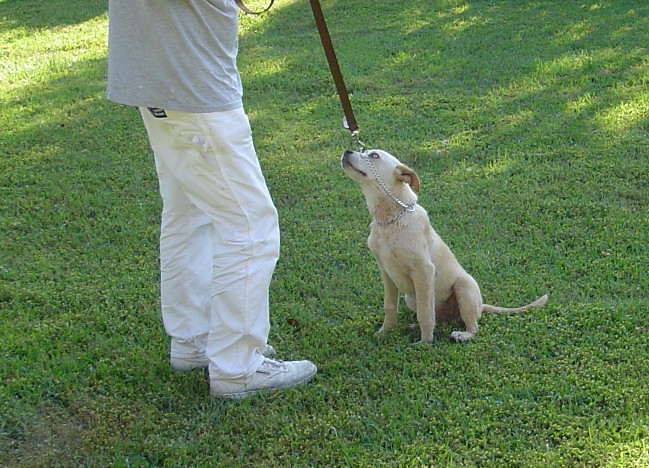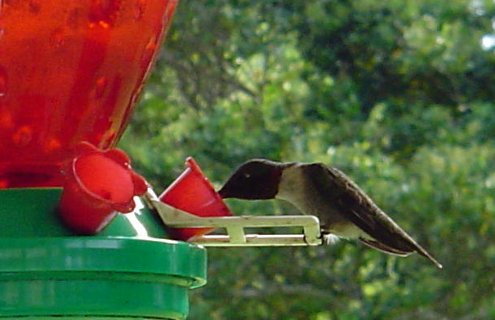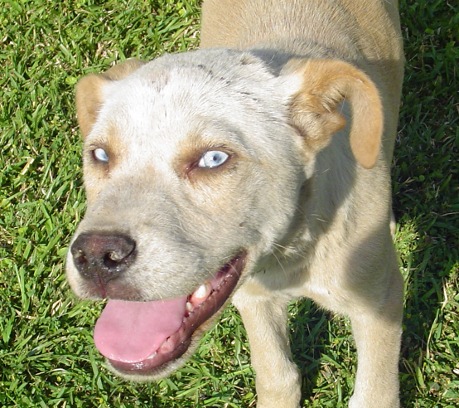
I started calling him Blue Dog because of those eyes!
For the most part, Brian and I love living in the rural south. But, there are a few things I would change if I could.
One, is the animal problem that is prevalent in our area. And that is what today’s blog is about.
I arrived home from work Wednesday to find a beautiful dog on my back deck. As I pulled into the driveway, he came down the steps and began walking towards the car. He stopped at about 10 feet away and looked at me after I got out of the car. Starving, mangy and with beautiful blue eyes, I kept my distance. He finally walked a few feet away and I went into the house to be greeted by Hubby. As we hugged, I began to cry. This poor, beautiful, pitiful dog. How could someone let this happen to an innocent creature?
I wanted to feed it, but Brian said no. So, I went into the house and began the evening house chores, keeping my eye on this dog through the window. He curled up and slept for awhile near the steps of the deck.
I called my neighbor, David. He would know what to do, I figured. After all, he and Julie have six rescue dogs and numerous stray cats that they care for. I knew this wasn’t one of my neighbor’s dogs. They take exceptional care of their critters, but I thought maybe he might know who it belonged to or might be able to advise me on what I should do. Well, the vet is out of town for four days, he said. And, I realized with that one statement what must be done. This dog needed care and I was elected to provide it just by virtue of him showing up on my doorstep.
Dammit! I don’t want to care for a dog. I already have three rescue kitties! Hubby and I have discussed in the past the responsibilities of dog ownership and decided we do not want a dog! We live on a main road, which is very dangerous for animals and we do not have a fenced yard to provide protection for a dog. We do not have very much discretionary income each month and pet ownership comes with a price! A pet needs food, water, shelter. A pet gets sick and needs veterinary care. A pet needs to be spayed/neutered, have its shots, yada, yada. No, a dog is not in our cards at this time. That would be just plain irresponsible on our part.
Before I hung up the phone with David, I knew I would need some dog food. I could run up to the grocery store and buy a bag, but somehow that seemed like I was accepting ownership. So no, let me just ask David if he could spare some, which of course, he could. So, Hubby, who is out cutting grass, sees me trekking next door with a container and races the riding mower over to me and says, “Don’t do it!” So, I get a little teary eyed again and say to him, “How can we not do this? He’s starving.” And, so Brian gives his blessing and I bring home some food for the dog.
Of course, the dog spent the night on the back deck. Of course, he greeted me when I went to get in the car the next day to go to work. Of course, he was there when I got home, and of course, he will probably still be here on Monday when I can take him to the vet to find out if he can be treated or if he should be put down.
Of course, I have begun calling him Blue because of those eyes. Blue Dog, Blue Eyes, Blue Boy. Dammit! If this dog can be saved, does anyone out there in the world wide web want him?
By the way, to the previous owner of this dog, “You are a putz AND an asshole!”
